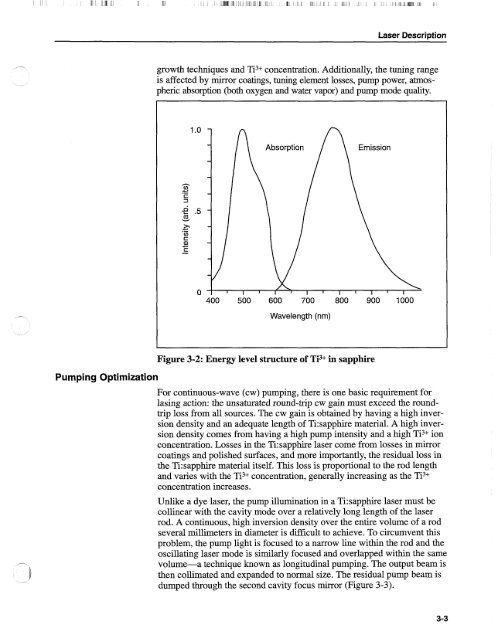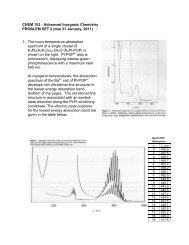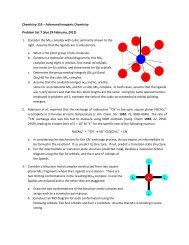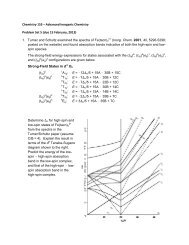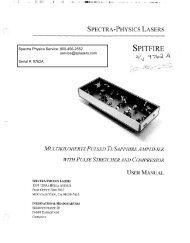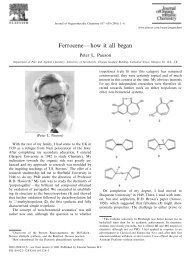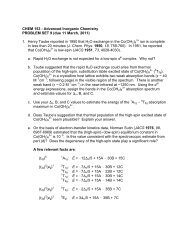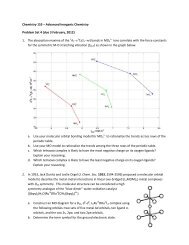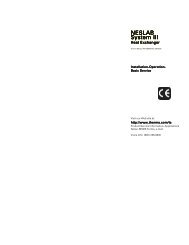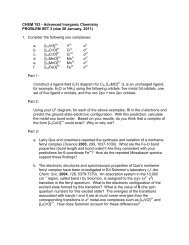Tsunami - Beckman Institute Laser Resource Center
Tsunami - Beckman Institute Laser Resource Center
Tsunami - Beckman Institute Laser Resource Center
You also want an ePaper? Increase the reach of your titles
YUMPU automatically turns print PDFs into web optimized ePapers that Google loves.
<strong>Laser</strong> Description<br />
growth techniques and Ti3+ concentration. Additionally, the tuning range<br />
is affected by mirror coatings, tuning element losses, pump power, atrnospheric<br />
absorption (both oxygen and water vapor) and pump mode quality.<br />
1.0 -<br />
-<br />
-<br />
-<br />
h<br />
V)<br />
.-<br />
C<br />
s<br />
-<br />
3<br />
G .5 -<br />
(d<br />
V<br />
h -<br />
C<br />
.-<br />
U)<br />
s<br />
+ a,<br />
s<br />
-<br />
0 I I I I I I I I I I<br />
I I<br />
400 500 600 700 800 900 1000<br />
Wavelength (nm)<br />
Figure 3-2: Energy level structure of Ti3+ in sapphire<br />
Pumping Optimization<br />
For continuous-wave (cw) pumping, there is one basic requirement for<br />
lasing action: the unsaturated round-trip cw gain must exceed the roundtrip<br />
loss from all sources. The cw gain is obtained by having a high inversion<br />
density and an adequate length of Ti:sapphire material. A high inversion<br />
density comes from having a high pump intensity and a high Ti3+ ion<br />
concentration. Losses in the Ti:sapphire laser come from losses in mirror<br />
coatings and polished surfaces, and more importantly, the residual loss in<br />
the Ti:sapphire material itself. This loss is proportional to the rod length<br />
and varies with the Ti3+ concentration, generally increasing as the Ti3+<br />
concentration increases.<br />
Unlike a dye laser, the pump illumination in a Ti:sapphire laser must be<br />
collinear with the cavity mode over a relatively long length of the laser<br />
rod. A continuous, high inversion density over the entire volume of a rod<br />
several millimeters in diameter is difficult to achieve. To circumvent this<br />
problem, the pump light is focused to a narrow line within the rod and the<br />
oscillating laser mode is similarly focused and overlapped within the same<br />
volume-a technique known as longitudinal pumping. The output beam is<br />
then collimated and expanded to normal size. The residual pump beam is<br />
dumped through the second cavity focus mirror (Figure 3-3).


